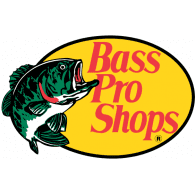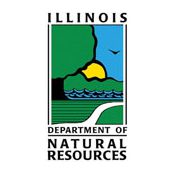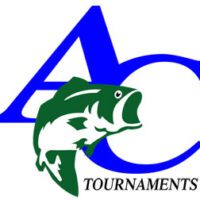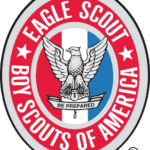Overview
-
Status
Ongoing -
Estimated Completion
2024 -
Location
Illinois -
Grants Received
$40,000 -
Total Budget
$713,566 -
Friends Group
Rend Lake U.S. Army Corps of Engineers -
Partners
Illinois Department of Natural Resources, US Angler's Choice, R2R Coop Weed Management, Eagle Scouts, Sesser-Valier Outdoorsmen Club
This project is proposed to create biological habitat, inhibit shoreline erosion on highly eroded areas, inhibit mobilization of sediment and nutrients, and reintroduce native plants to an area invaded by common reed. The benefits expected include: increased complexity and diversity of habitat for fish and other wildlife, decreased turbidity, siltation, and nutrient loading for improved water quality, increase of native plant species, and the protection of infrastructure necessary for the outdoor recreators to Rend Lake and its surrounding communities. This will promote increased density of priority game fishes and other desirable organisms for greater quality of experiences for anglers, campers, and other outdoor enthusiasts. This improvement project will also increase tourism dollars spent in the surrounding communities.
Photo Gallery
Why It Matters
Rend Lake is a U.S. Army Corps of Engineers (USACE) reservoir located in Jefferson and Franklin Counties of southern Illinois. The Rend Lake dam is located on the Big Muddy River, 103.7 miles upstream from in confluence with the Mississippi River. At normal pool (405.0 feet), Rend Lake has a surface area of 20,633 acres, a maximum depth of 35 feet, and a mean depth of 10 feet. The lake is thirteen miles long and three miles wide, and has 162 miles of shoreline. It is the second largest impoundment in Illinois. The Rend Lake project contains 53 recreation areas, with 756 campsites, 104 picnic sites, 30 boat ramps, 235 marina slips, and over 34 miles of trails. Nearly 2 million people visit Rend Lake annually, generating on average $35M in visitor spending within 30-miles of the project. Rend Lake’s missions include flood risk management, water supply, water quality, fish and wildlife conservation, recreation, and area redevelopment.
Threats
Rend Lake is home to more than 38 species of fish and is known for its excellent crappie fishing. Rend Lake is not ideal for largemouth bass reproduction due to the dramatically varying spring water levels.
This results in the need for an annual supplemental LMB stocking to offset poor reproduction years. With the help from the IDNR, just over 393,000 bass fingerlings have been stocked in Rend Lake in the last ten years including 16,520 bass fingerlings (5-6 inches) in 2021. This fluctuation of water levels has also affected the shorelines of Rend Lake, causing major erosion and the need to armor its shorelines for the protection of cultural resources, infrastructure, lake longevity, and water quality. Shoreline erosion is also prevalent due to flat terrain, wave action from winds and boaters, and the lack of sands and gravel in the soil.
The water level’s drastic transitions from drought year to flood year has also allowed the invasion of common reed (Phragmites australis) on almost every section of shoreline that is not armored at Rend Lake. This is threatening the lake’s shallow water locations for crappie spawning.
What FOR Is Doing
To combat these issues, Rend Lake USACE continues to promote habitat restoration through the annual Christmas Tree Drop event leveraging over $60K and supplementing multiple locations each year with the donation of 600 plus trees. We also continue to use funds when possible to purchase materials to construct artificial structures that long outlast the woody vegetation. Through partnerships with local eagle scouts, the IDNR, and a local high school Outdoorsmen Club, 30 “modified Georgia Cubes” and over 1,100 porcupine and spider block structures were built and placed in Rend Lake over the last 3 years. Another 32 cubes have been built and are ready for placement soon. These projects leveraged over $25K and has greatly improved the Rend Lake fisheries. The following is the link to take you to our recent fish habitat improvement project results: https://indd.adobe.com/view/d9114370-0607-4cc0-8433-f02f754826df Also, the USACE invests an average of $250K each year to repair shoreline erosion; an estimated $10M in whole to protect the lake and its features.
Methods
Rend Lake USACE will be using federal funding and help from multiple partners to protect shoreline, create habitat, fight invasive species, and promote healthy fish populations. In previous years, shoreline protection involved placing large rock directly onto the eroding slope. After learning how other locations are creating rock dikes along the base of their shoreline, above the normal wave action line, to allow for natural sloughing and to create natural habitat, we decided this was the best solution for our shoreline with the most extreme slopes. One of the worst areas, with the most to protect, is over 1300 feet of shoreline along the South Sandusky campground within the Sandusky cove. This area is used by campers, boaters, and anglers all year long. Without the addition of rock, several campsites and part of the roadway will soon disappear into the lake taking away from outdoor experiences and tourism dollars. Using federal funds, over 4000 lbs of 400 lbs rip rap will be added to the base of the shoreline in the fall of 2023. In 2024, in partnership with Angler’s Choice, 60 container Bald Cypress trees will be planted behind the rock along the shoreline to provide additional shoreline stabilization and habitat for aquatic life. A local eagle scout and volunteers will assist USACE and the IDNR in planting appropriate aquatic and wetland native species plugs along 30,000ft2 section of shoreline.
A second phase of the project will address common reed. This invasive species continues to present a significant management challenge at Rend Lake. It is continuing to expand and invade shallow water areas including the Jackie Branch Cove. The Jackie Branch Cove is full of anglers all times of the year, but one long dry season and the common reed could take the majority of the Cove over, depleting oxygen levels and becoming too thick for boat and even fish use. In partnership with the River to River Cooperative Weed Management Area (RCWMA)organization, donated maps from a free flyover were provided, showing all of the phragmites locations. The RCWMA also provided us with the correct prescription to kill this invading weed and helped us find an aerial contractor who could perform the spraying. The last two years, USACE and RCWMA has successfully sprayed over 270 acres of common reed, bringing their population down to less than 10% in the applied areas. A “touch up” chemical application will be done in the late summer of 2022 and 2023 followed by prescribed fire. This will leave over 5 acres at Jackie Branch cove bare and open to potential new spread of common reed. To combat this, 240 bald cypress trees along with native aquatic plant plugs will be planted in these areas. This will be accomplished through partnership with Angler’s Choice, IDNR, local eagle scouts, and the local high school Outdoorsmen Club.
Monitoring Plan
Success of the project will be gauged primarily by the bank stabilization, reduction of common reed, and native plant expansion outside of the planting area, and secondarily by fish response to the restoration areas. IDNR fisheries biologist will continue to conduct annual fall standardized fish population surveys and fall annual stocking success surveys to evaluate changes in the fish populations. The surveys provide data such as density, size, and body condition. Species evaluated would include largemouth bass, crappie, bluegill, catfish, striped bass hybrids, and white bass. Please see the 2022 Fisheries Fact Sheet attached. The IDNR and USACE have also surveyed the artificial structures placed recently, finding that they are heavily used. The IDNR will continue to perform their surveys and take note of newly restored areas for comparison from the past and into the future.
The Rend Lake USACE will place physical stakes and take GPS points to mark the outside boundaries of the planted native species plugs. USACE will also take a preliminary slope with follow up measurements annually. The survivability of the cypress trees will also be measured and note taken of which locations, and their characteristics, they performed the best in.
Improvements to angling quality will be monitored through personal contacts. The USACE has a great working relationship with several anglers that fish Rend Lake almost daily. They provide us with input for our weekly fishing report, give us advice on where best to place artificial structures, and assist us with setting woody vegetation and artificial habitat.
Use of the camping loop that will benefit from the bank stabilization will also be monitored through reports from the reservation system. Currently the bank is too steep to fish from, but over time should sluff to a natural slope allowing for public use.
Outreach Plan
Signage listing the major contributors making the habitat restoration possible will be displayed at the Jackie Branch Boat Ramp and along the shoreline of the South Sandusky Campground. Contributors include: USACE, IDNR, Angler’s Choice, Multiple Eagle Scouts/Troops, Sesser-Valier Outdoorsmen Club, Friends of Reservoirs, and Reservoir Fish Habitat Partnership.
News Releases will be sent to all local news stations and radio stations explaining the projects, partner contributions, and grant funding provided.
Articles explaining the above will also be written and published in the monthly “Rend Lake Adventures” and the annual “Rend Lake Visitor Guide”. These are distributed through the campgrounds, local communities, and through the Rend Lake Area Tourism Council’s managed Facebook page and websites, rendlake.com and enjoyrend.com.
The USACE also has a Facebook page (12,000+ targeted followers) and the Rend Lake Project website. These posts are continuously shared by the local fishing guides and fishing clubs.
We will continue to discuss our habitat projects with stakeholders during annual communication meetings and during public events, such as the annual tree drop.
Related News

Request for Proposals for Bass Pro Shops Large Grant FY2027
The Reservoir Fisheries Habitat Partnership (RFHP) is pleased to announce the FY2027 Request for Proposals for on-the-ground fish habitat enhancement projects in reservoirs. RFHP is one of 20 federally recognized National Fish […]

National Fish Habitat Partnership Funds Nine Reservoir Priority Projects through 2025 Bass Pro Shops Outdoor Fund Grant
(Washington, DC) – Following up on 13 priority Reservoir projects funded in 2024 through a Bass Pro Shops Outdoor Fund grant, the National Fish Habitat Partnership (NFHP), was grateful to receive another $500,000.00 […]

New Product from FOR Sponsor NATRX
Getting larger fish habitat deployed can be expensive and logistically challenging. NATRX now has hand-deployable fish habitat structures and shoreline stabilization units, packaged together as a pond management restoration kit. […]
Donate Today
to support similar habitat projects
Green Sponsors
Gold Sponsor
Silver Sponsor
- R2R Coop Weed Management






